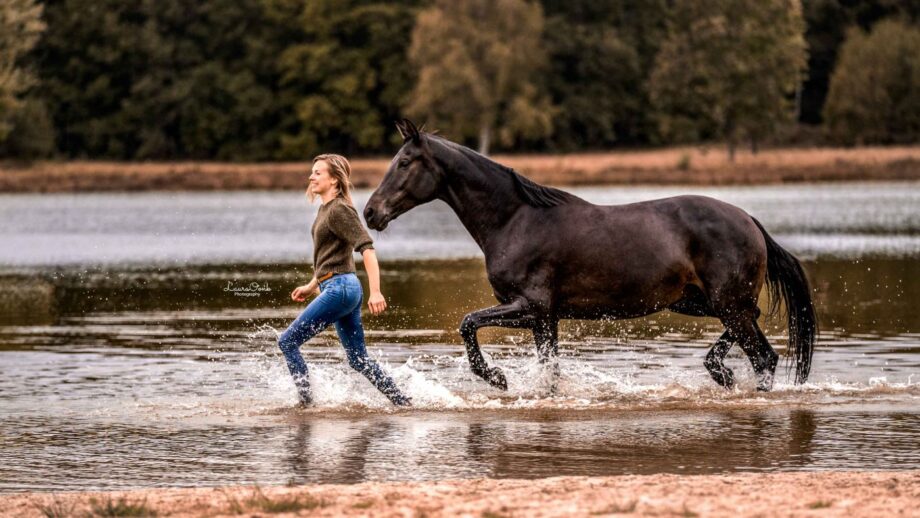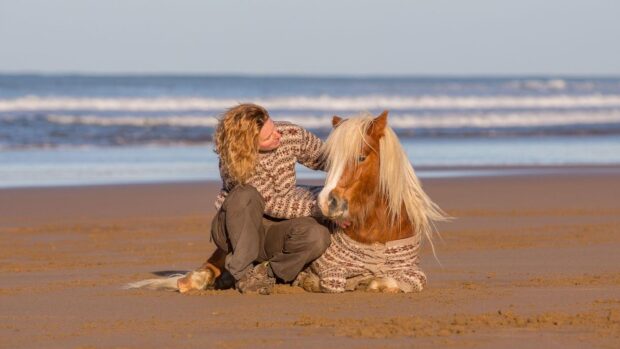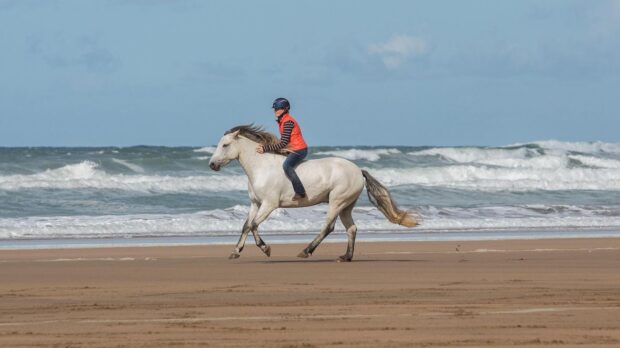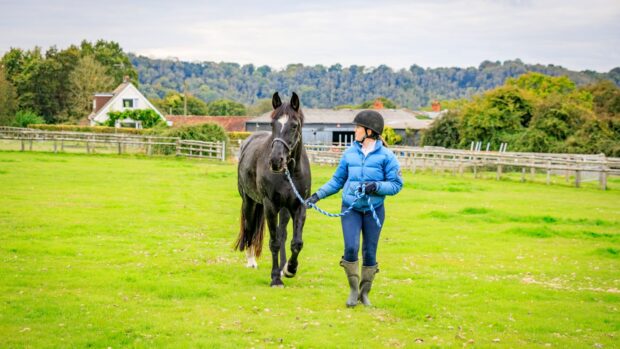How often have you found yourself wondering how get your horse to listen to you? It’s probably plagues you on a regular basis. But how much do you consider the alternative notion: how do I listen to my horse? Horse liberty exercises start with this very basic premise, that you are tuned into what your horse is “saying”.
As Yvet Blokesch, founder of Feather Light Academy, describes, turning your attention to equine body language and signals is how to connect to with a horse. It’s the foundation of much of her liberty work.
“First listen, don’t teach”
“When I first start working with a horse, I don’t teach him anything,” explains Yvet. “I don’t teach him to come towards or stick to me, I spend those initial moments or sessions showing him that all the signals he’s giving have meaning to me.
“The connection that follows and makes him hook on to me is really just a result of him feeling seen and heard,” she continues. “He thinks, ‘OK, we can communicate’. And that feels good, and he feels he can stick to me.
“Once we have that basic connection, that’s when we go deeper into liberty training.”
Of course, without ropes, halters and training aids, horses can opt out. So, as Yvet explains, the challenge is maintaining the kind of dialogue your horse wants to participate in. This also means making him feel understood, which can only be gained by recognising the signals the horse gives you.
“This is where liberty only succeeds with a connection and understanding,” says Yvet. “If you’re handling your horse on a rope and miss a signal from him, you can always use the rope to pull him back.
“If you don’t have a rope and you make a mistake, you can’t compensate or cover up miscommunication.”
Introduction to horse liberty exercises
How to connect with a horse at liberty
For a beginner trying to establish connection for the first time, Yvet recommends starting fresh from the stable or field, rather than following a ride.
“You want it to be unbiased, the first interaction you have,” she says.
“I usually start in the arena or lunge pen. You might want to make the space a bit smaller so you don’t have to run around as much when you take off the headcollar.”
Yvet reiterates that making a connection with a horse isn’t about asking them for anything specific.
“You just let you horse free in that space and don’t ask anything to begin with,” she confirms.
Once your horse settles somewhere in the arena, which could be near or far from where you’re standing, you can ask a question.
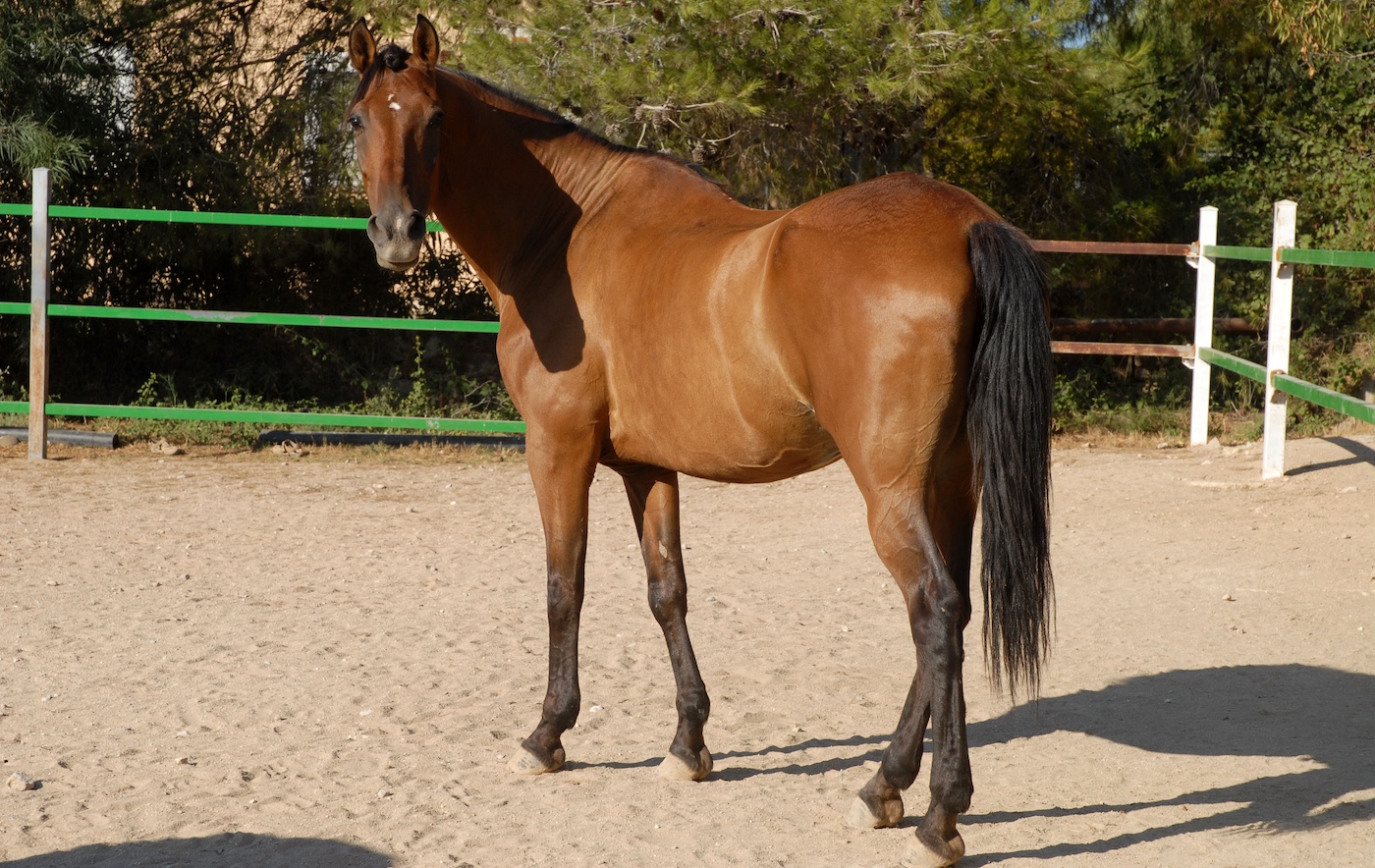
Start by letting your horse loose in an enclosed space, and wait until they settle before asking for a small response. Credit: Alamy
“You’re not looking for an exact response to what you’re asking,” explains Yvet. “Just some sign from your horse that shows he’s interpreting a small signal from you.
”For example, I might want to ask, ‘hey, I’d like you activate the right side of your body’. This would look like growing in energy or stature on the right, it doesn’t matter if the horse is moving or stood still.”
Yvet says the key to asking your question is to do so slowly.
“I would point to him by raising my right hand very slowly, and make myself bigger in my body position gradually,” she explains. “Grow in your own body, and look for your horse to grow with you.”
Yvet adds that you’re searching for a signal from your horse that shows he recognises you’re asking a question.
“If you go too fast, you miss the precise point at which your question has meaning to your horse,” she says. “He doesn’t necessarily have to come up with the right response yet. He might look at you, flick an ear towards you – something like that will show you he understands you’re asking something.
“As soon as he shows you he’s listening, you stop asking,” she continues. “Then you ask your question again in the same way.”
Yvet says it’s important to acknowledge your horse’s response, whatever that might be, but this might look different owner to owner.
“I just has to be a genuine response,” advises Yvet. “For some people, that might be saying ‘good’, or ‘yes’. Others might be silent. The most important thing is to feel that understanding between you on the inside.”
Not joined at the hip?
Handlers shouldn’t worry if their horse doesn’t stay next to them for much, or indeed any, of the session.
“It’s important not to expect your horse to stick to you the whole time – it doesn’t mean your work with him is any less ‘liberty’,” Yvet says.
“Finding connection with your horse in the early stages doesn’t have to be from up close. Liberty is not just about being next to one another. It’s about being together even at a distance.
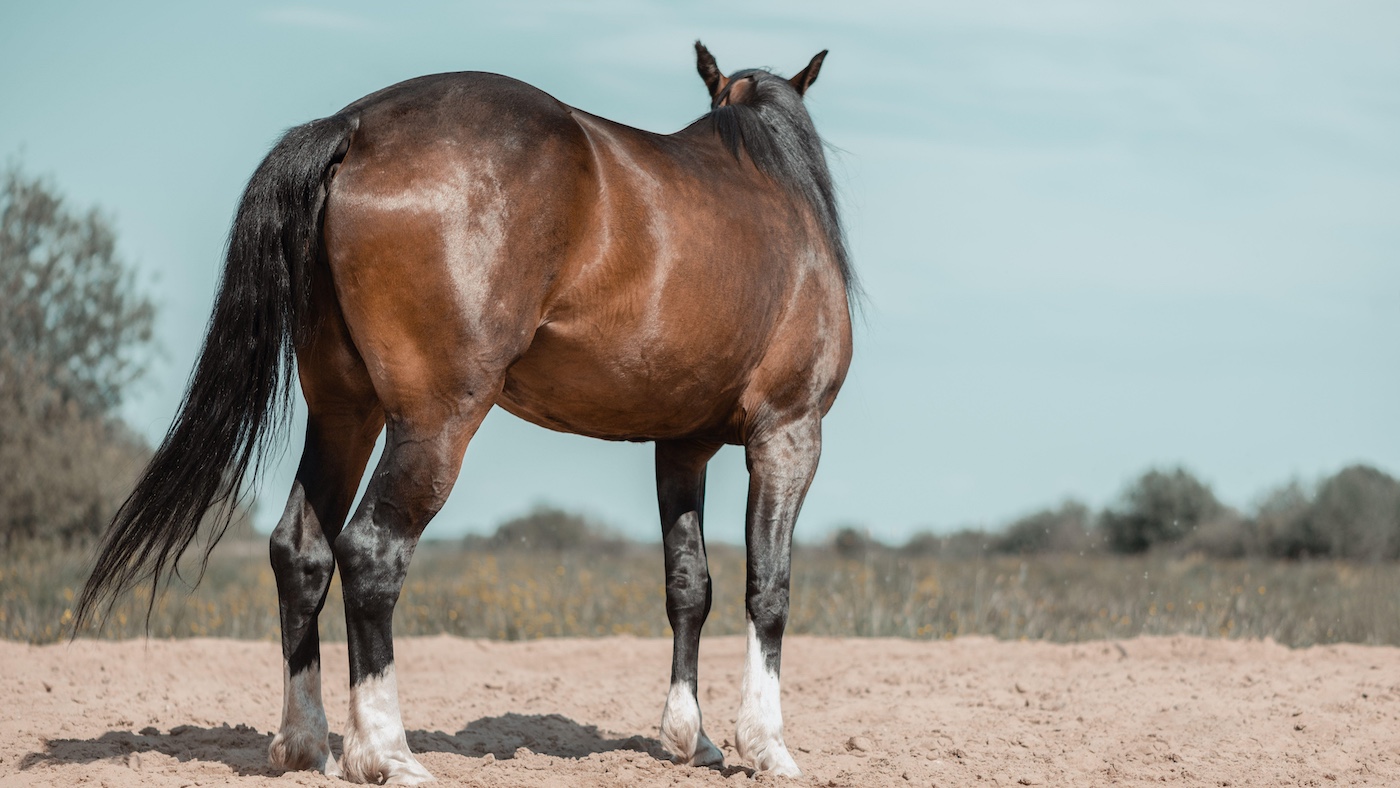
Don’t expect – or insist on – the horse staying with you, particularly in the early stages of your liberty training. Credit: Alamy
“Show your horse he has a choice when working with you,” she continues. “It’s OK if sometimes he runs away, just be aware that he’s just disconnecting temporarily, and there’s a reason for that disconnection.
“If you stay aware of and connected with him, he will always come back – as long as he feels there is something in it for him. That’s the beauty of liberty: it helps you become something that your horse wants to be with.”
These are baby steps at the very start of liberty training, and is likely to feel and look unimpressive, but like all foundations it’s important to get it right from the outset. And when you witness Yvet’s skill with her horses and ponies at her demos in front of thousands of people at shows, or on her social media, it’s inspirational stuff.
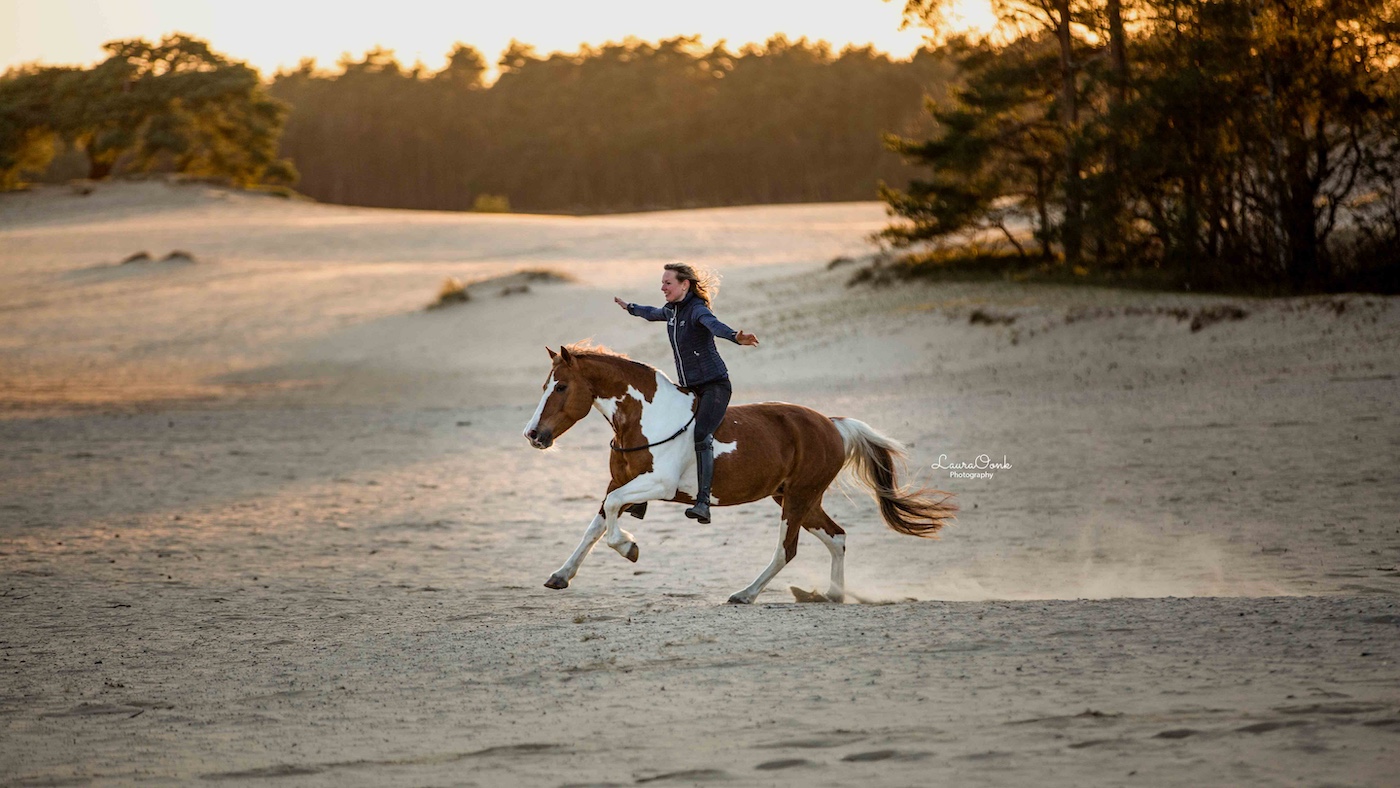
Yvet demonstrates the high levels of liberty training that can be achieved. H&H recommends safety helmets are worn when riding. Credit: Laura Oonk
Did you find this article interesting? You may also enjoy…

‘A broader experience of life off the leadrope’: Emma Massingale reveals the liberty training exercises you need to start your journey

Want to get started with liberty training? The chances are you’re already doing it with your horse
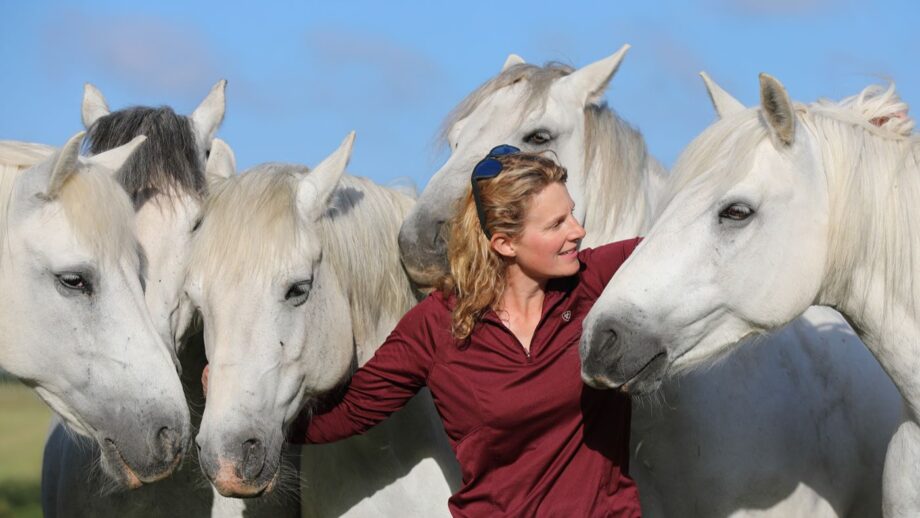
Interested in working horses at liberty? Here’s what you need to know about its history, approaches and best practice from expert horse trainers

Build your confidence in handling horses on the ground, whether you’re a rider or the vital helping hand
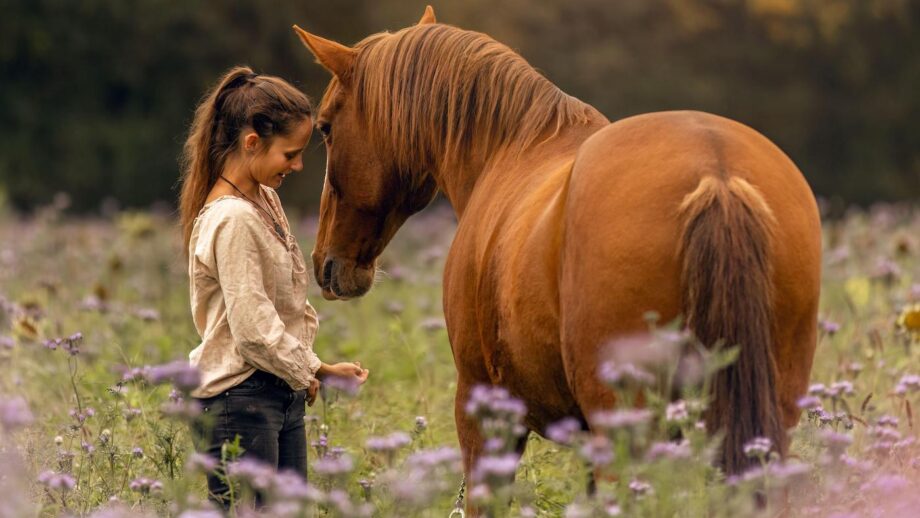
Is your horse difficult to catch? These simple groundwork exercises will encourage your horse to come to you
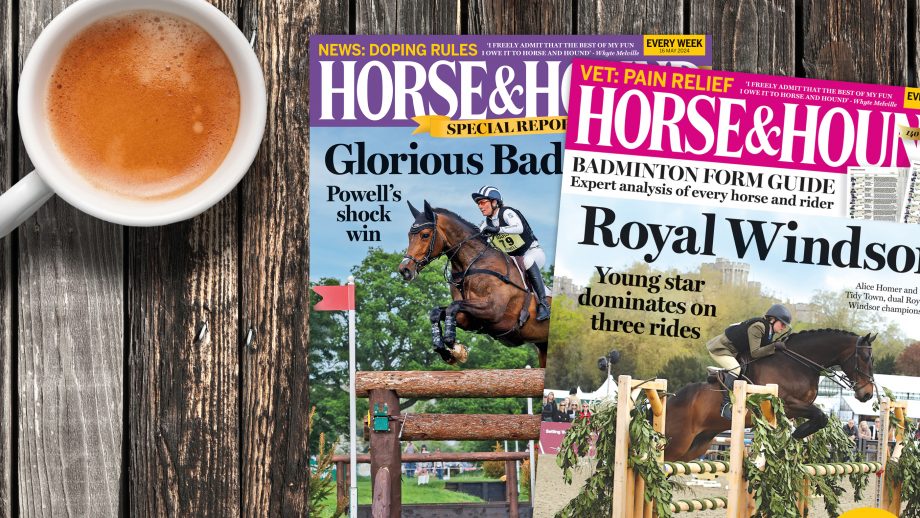
Subscribe to Horse & Hound magazine today – and enjoy unlimited website access all year round

